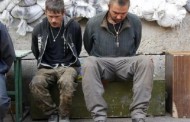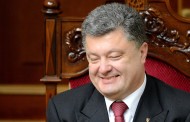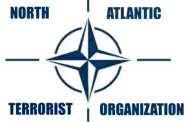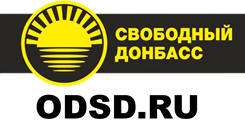Violence erupted outside the parliament building in Kiev this week during protests against constitutional changes which could grant more autonomy to pro-Russian separatists in eastern Ukraine.
Proposed by president Petro Poroshenko, these changes would decentralise power in Ukraine, allowing local self-government in “certain districts of Donetsk and Lugansk regions”, to be determined by a separate law.
The proposals, supported by the US and EU, form part of a promise made at the Minsk peace agreement to grant “special status” to the pro-Russian rebel-held regions to help end the ongoing conflict in eastern Ukraine.
But in reality, these constitutional changes are only a distant relation to the letter of the Minsk agreements. Poroshenko’s proposal is not approved by the separatists, nor by the Kremlin. It does not really give any “special status” to separatist areas, and any specific details on autonomous rule in Donbass may later be revised by a simple majority vote in Ukrainian parliament.
Moreover, the so-called “decentralisation” is accompanied by a strengthening of the presidential control over local self-government via centrally assigned “prefects” with broad powers.
The far-right party Svoboda, the Right Sector party and some of the current coalition government parties criticised the changes as a “capitulation” to Russia, and Monday’s protests turned bloody after a man – reportedly a member of a far-right battalion, called Sich – threw a hand grenade into a dense police line.
The government reported that more than 130 law enforcement officials had been injured, and three National Guard soldiers – all young draftees – died from injuries.
The Sich battalion, created with the support of Svoboda, is one of many formed in the past year to challenge separatist rebels supported by Russia in the east of the country.
However, in an interview with Sky News on Wednesday, Poroshenko claimed Russia was in fact responsible for the deaths. The president claimed the Kremlin’s ongoing “campaign of destabilisation” was to blame, despite clear indications that it was far-right nationalist supporters who were driving the clashes with the police.
Responding to the clashes, the Svoboda party claimed the violence was a planned provocation to discredit “patriots”, while pro-government groups and the liberal Ukrainian public have in turn hysterically blamed Svoboda for the deaths of the soldiers.
Rare voices from the left are now quickly reminding the liberals – in firm “I told you so” mode – that they warned much earlier of the dangers of prolonged cooperation with the far-right, and this violence, they suggest, is the outcome.
But as usual in cases of tragedy, emotions are selective. Throwing a hand grenade into a dense crowd is hardly the worst act of violence going on in Ukraine today. Even worse atrocities are committed almost every day in the Donbass region by “ordinary” people from the both sides of the conflict.
But during war violence can become trivialised, particularly when it is far from home – and far from Kiev. However, the war takes on new meaning when an angry and armed veterans come back, feeling betrayed by the government.
It is the current government that bears more responsibility for the ongoing conflict than the Ukrainian far-right and its armed groups. It is the current government who are responsible for new repressions, censorship and discriminatory measures.
Though right-wing parties like Svoboda and the Right Sector were indeed prominent in the Euromaidan uprising in 2013, later increasing their resources and forming their own armed units, they have not been able so far to gather mass support behind them.
Today, they merely react to the events – they’re not pushing them forward. Even in the case of Monday’s violence, Svoboda was just trying to win political points on the eve of local elections, hoping to give their calls of “national betrayal” a greater platform. They are unlikely to have seriously planned an armed attack, they just weren’t able to control their extremist supporters in the crowd.
Though the government has already used Monday’s violence to discredit Svoboda as irresponsible politicos, it remains to be seen whether they will now attempt to repress the far-right.
But perhaps an even more pressing question is whether the government even has the capacity to suppress the right, given their growing bands of loyal armed units.
As the violence in the western town of Mukachevo suggests – where Right Sector combatants clashed with law enforcement, leaving seven dead – when the far-right have several thousand armed men who can challenge the state monopoly on violence; can call for an open mutiny against the state; and still suffer almost no serious consequences, how powerful really are the government?
Meanwhile, as the government points fingers, the coalition is fracturing. The populist Radical party has quit the government over the decentralisation bill.
Gathering the votes in the parliament for the final approval of the constitutional changes also seemed to be impossible without support from the Opposition bloc, a successor to pro-Yanukovych Party of Regions – a very symbolic fact that will give only more grounds for the far-right to attack the government for betraying the Euromaidan “revolution”.
What may emerge in Ukrainian politics is a frightening situation, where the main alternative to a right-wing nationalist government – is an ultra-right, ultra–nationalist opposition.







One Comment
Jalaluddin
Poroshenko should provide an island retreat where Svoboda’s top leadership can gather to relax at weekends.